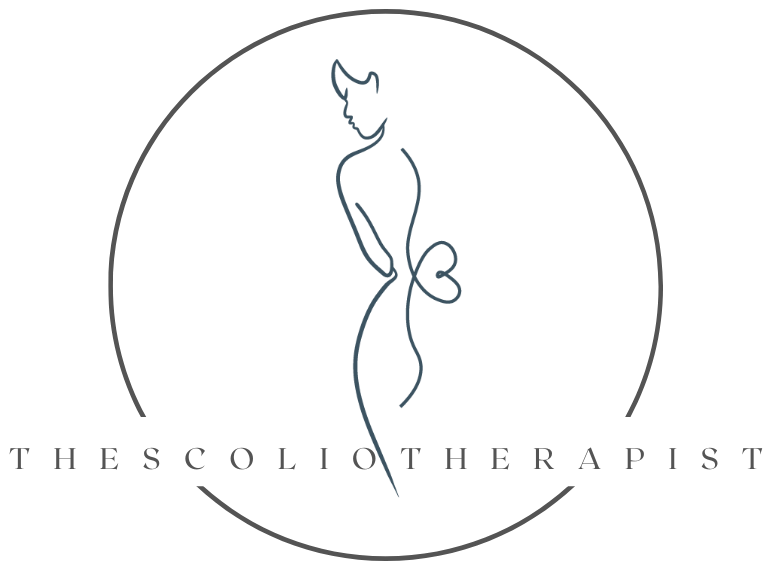An In-Depth Overview of the Schroth Method: Assessments, Exercises, Props, and Potential Results
We’ve covered the basics of the Schroth Method and how it differs from traditional physical therapy. The Schroth Method incorporates scoliosis-specific exercises to address the spinal curve, instead of just focusing on pain management.
But what does it actually look like to participate in Schroth therapy? Now we’re going to get into the nitty-gritty details of this method of scoliosis care. Let’s talk about the assessment process, how the exercises work, what equipment you need, and what kind of results you can expect.
The Schroth Method Assessment Process
What should you expect when you make an appointment with a Schroth-certified scoliosis specialist? The first thing they will do is complete a comprehensive assessment of your body and your spinal curve. Here are some of the measurements they’ll take:
Your height (because the Schroth method can help you grow!)
Degree of rotation in the spine (using a scoliometer)
Lung capacity (using a spirometer, or a cloth tape measure at specific points around the torso)
Baseline posture and positioning (using a laser level)
A Schroth-certified specialist may also refer to your x-rays and perform “typical” physical therapy assessments of balance and strength.
Your specialist will take all these measurements and data points and use them to classify your curve into one of three curve types:
Primary thoracic curve
Primary lumbar curve
Balanced curve
As the names suggest, each category describes the basic shape of your curve. If you have a primary thoracic curve, the thoracic (middle/upper back) spine has the biggest prominence. With a primary lumbar curve, the most significant curve is in the lower back. If you have a balanced curve, the thoracic and lumbar curves are fairly similar.
Schroth Exercises
The Schroth Method incorporates different types of exercises designed to meet specific goals.
Elongation
Breathing/stabilization
Auto-corrections
Remember, the overall goal with the Schroth method is to improve your posture and develop the musculature your body needs to maintain that alignment during daily activities.
Most Schroth therapy sessions will begin with prep work focused on elongation. The idea is to warm up the muscles and get the body ready for additional exercises.
After that, you’ll probably move into some targeted exercises designed to improve your coordination and/or balance. The general order of exercises is kneeling, supine (lying on your back), side-lying, sitting, and standing. Some Schroth therapists may make modifications based on your unique curve, needs, and goals.
In each of these positions, you would work on correcting your alignment and breathing intentionally in that corrected position. That alignment work gets progressively more challenging as you move into different positions that force you to work against (instead of with) gravity.
Recommended Equipment
Some Schroth exercises require specific equipment.
Stall bars to facilitate elongation exercises (If you’re practicing at home, you can use a pullup bar or a wall.)
Wedges (There are different types of wedges for scoliosis, including rice-filled or foam styles. You can also substitute hand towels.)
Yoga blocks and straps (Used for both elongation and strengthening exercises.)
“Official” Schroth Method equipment can be pricey, but the substitute options (like hand towels or a pullup bar), can be just as useful and much more affordable.
Time Commitment
How much time does it take to perform your Schroth exercises? Ideally, you should practice them every day outside of your therapy sessions. That might sound like a lot, but it doesn’t have to be — the baseline is about 20 minutes per day.
When you’re exercising, it’s especially important to make time for expansive breathing in each of those elongated positions. That’s what will make the biggest difference.
But you don’t have to spend that time all in one chunk — you can break it up into micro-sessions throughout the day. And as you get more advanced, you can start incorporating those auto-corrections into your daily routine and typical movement.
Potential Results With the Schroth Method
Let’s answer the most important question — is the Schroth Method effective? Is it worth spending the time and money to get the equipment and do the exercises? What kind of results can you expect — and how soon will I see them?
I wholeheartedly believe in the Schroth Method. It’s backed by scientific evidence, and I’ve seen many of my clients make significant progress through this approach.
Like most things, your results with the Schroth Method depend on how much effort you put into it. Are you consistently doing the exercises every day? Are you using a mirror or camera to verify your alignment while you work on your breathing?
Of course, your specific circumstances (like the severity of your curve and your initial familiarity with exercise) will affect your results. But on average, it takes about 20 sessions to become familiar with the exercises and start to make the auto-corrections continually without conscious thought. And that’s when you’ll really start to see significant improvement.
Ready to Try the Schroth Method?
If you’re intrigued by the approach and potential benefits of the Schroth Method, I’d be happy to work with you, either in person or virtually.
I offer virtual small-group coaching through The Scoliosis Strength Collective. This program will help you understand your curve better and exercise in ways that reduce pain, increase strength, and slow or reverse curve progression. I also offer 1:1 coaching if that’s a better fit for you. If you’re not sure which is right for you, schedule a discovery call, and we’ll figure it out together.
Don’t forget to subscribe to my podcast, Ahead of the Curve, to get every episode when it airs.
Resources Mentioned
The Scoliosis Strength Collective
